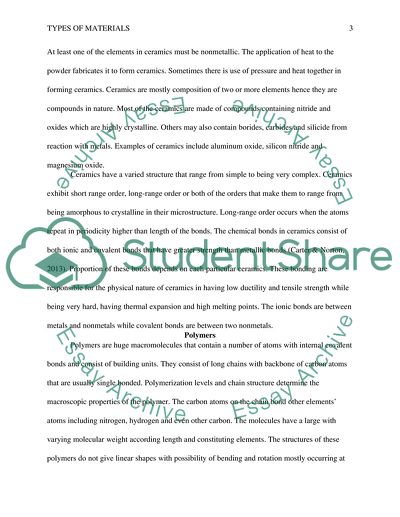Types of materials (metals, ceramics, polymers,composites) Essay. Retrieved from https://studentshare.org/miscellaneous/1696348-types-of-materials-metals-ceramics-polymerscomposites
Types of Materials (metals, Ceramics, polymers,composites) Essay. https://studentshare.org/miscellaneous/1696348-types-of-materials-metals-ceramics-polymerscomposites.


